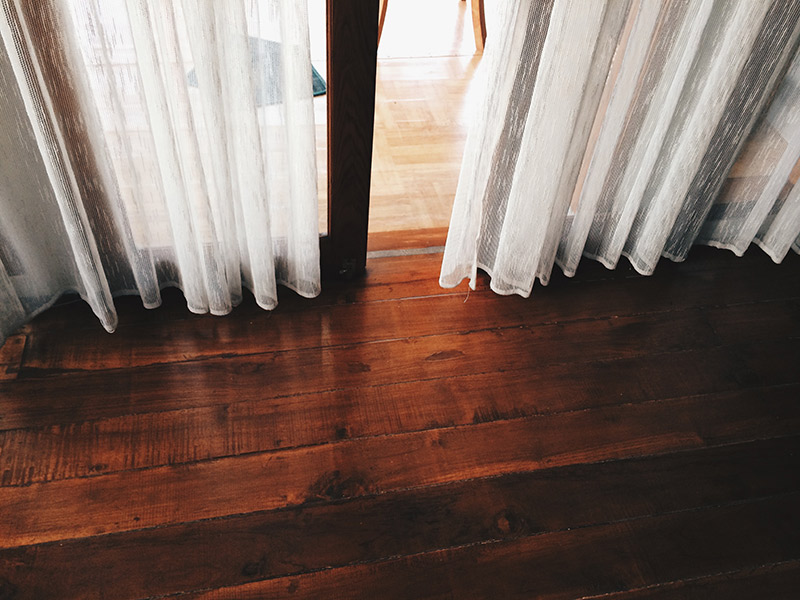
A noisy neighborhood you simply cannot get used to. Believe me; I know this to be true. Children playing, which means screaming. Chatty people passing by constantly, never-ending traffic noise, and whatnot.
Sometimes all this commotion is just unbearable, particularly in the night. Or whenever you’re trying to get sleep. At such times, you wonder are the best noise reducing curtains really effective?
Soundproofing your room is not exactly an option. Considering how ridiculously expensive the process can be! So an affordable and equally effective solution is soundproof curtains. These curtains are very easy to fix up. And, most importantly, they reduce the level of noise quite drastically.
So you can keep on reading to know more.
Are the best noise reducing curtains worth the money?
The answer to this question is based on your personal needs and requirements. Do you want to buy soundproof curtains to mute out all the noise? If yes, then you’re wasting your precious dollars. Sound still escapes into your room. That means you require more than just a curtain for eliminating all of the outside noise.
Instead what noise reducing curtains actually do is minimize the noise level. Present both outside and inside the room.
These acoustic curtains have a thick design with multiple layers. Such a structure is responsible for reducing the echo by absorbing most of it. And the outcome is a considerable decrease in the noise levels. This works best for echoing sounds like a barking dog or construction jobs.
But if maximum soundproofing is your goal. Why not combine noise reducing curtains and soundproof windows? The pairing up does seem like a slightly expensive move. However, the capabilities of noise canceling are much amplified here. Even so, the process is still less costly than replacing your walls.
Factors to Take into Consideration When Buying the Best Noise Reducing Curtains
-
Size
By size, I mean the width and length of soundproof curtains. Noise reducing or not; when buying curtains, measuring the size of your window is common sense.
However, here’s the thing about noise reducing curtains. They have to be 3 times broader than the window. And 10 inches longer. You might think this is excessive. But you should know that the additional size helps in maximizing their coverage. And also increasing the ability for canceling out the noise.
To get access to maximum effects, it’s also advisable to keep curtains from the ceiling to the floor. But don’t forget to measure the window frame in this case. You obviously don’t want your soundproof curtains to be sweeping the floor. Or getting in the way. However, the additional length offers a large covered surface for the window.
-
Weight
Apart from width and length, weight is also a crucial factor. Cause, after all, heavier curtains equal to more soundproofing. But heavier curtains also equal to a pain in the backside when it comes to installation and handling. However, you have no choice if you want to cancel a lot of noise. Heftier curtains are the only way to go in such scenarios.
Just keep in mind that more weight means better abilities to reflect and absorb sounds. Particularly when low-frequency noise, like heavy machinery, is to be dealt with.
If the outside noise still sounds intolerably loud, try this. You can always triple or quadruple the curtain layers for more noise absorption. Yes, that is possible, and a sensible move. But for that, your curtains demand a heavy-duty curtain rod. This is when the next factor comes into the picture.
-
Curtain Rod
Rods are supposed to hold the heavy curtain weight. At the same time, they should contribute to the overall soundproofing capability of the curtains as well. So the safest bet would be wrap-around curtain rods.
They connect into your walls in the shape of a curve. Such an attachment is very useful when noise absorbing curtains are a part of the scene. It helps with eliminating gaps found in the edges. This means complete area coverage for canceling out the noise.
Another secure option is double rods. These curtain rods make way for a double layer of soundproofing curtains. And that, in turn, increases the noise reduction capacity. While also cutting out most of the light entering your room.
In my opinion, you should opt for double rods if multiple panels of curtains are on your mind. They amplify noise protection to a great extent.
The final option here is to ditch curtain rods on the whole. Instead, you can use ceiling-mounted brackets. The brackets help in giving more coverage from the ceiling to the floor. Thus, paving the way for complete noise deadening.
-
Material
Never underestimate the power of the material used for the construction of the curtains. Extra fibers are always a great idea. So look for materials such as velvet and suede. They contain additional fibers in them, which work well in terms of noise canceling.
Here’s another important point to remember pertaining to the material. Layers tagged as thermaweave, thermal layer, insulated, etc. also include extra fibers. That contributes to maximum noise absorption. Thermal protection does an excellent job of also keeping heat and cold out of the room.
And finally, there are options like extra liners as well. They provide tremendous noise deadening power. The majority of the best noise reducing curtains comes with these extra liners. They are available as blackout liners, window liners, and curtain liners. It’s the additional layer that sound goes through for escaping into the room.
That’s About It!
Complete silence is not what you should expect from noise reducing curtains. But they certainly make outside noise less noticeable. So you can enjoy some peace and quiet in your home.
And the most important thing, soundproofing curtains are a quick and cost-effective solution. So you can’t go wrong with them. Believe me, you just can’t.
Author Bio:
Chris Miller has a very powerful influence when it comes to reviewing tools and DIY-related equipment. He has written some of the most persuasive reviews about home improvement products. As an enthusiastic blogger, he knows how to create content to attract attention. But to be successful, he understands how to make this content more relatable for his many loyal readers.
Sources:


